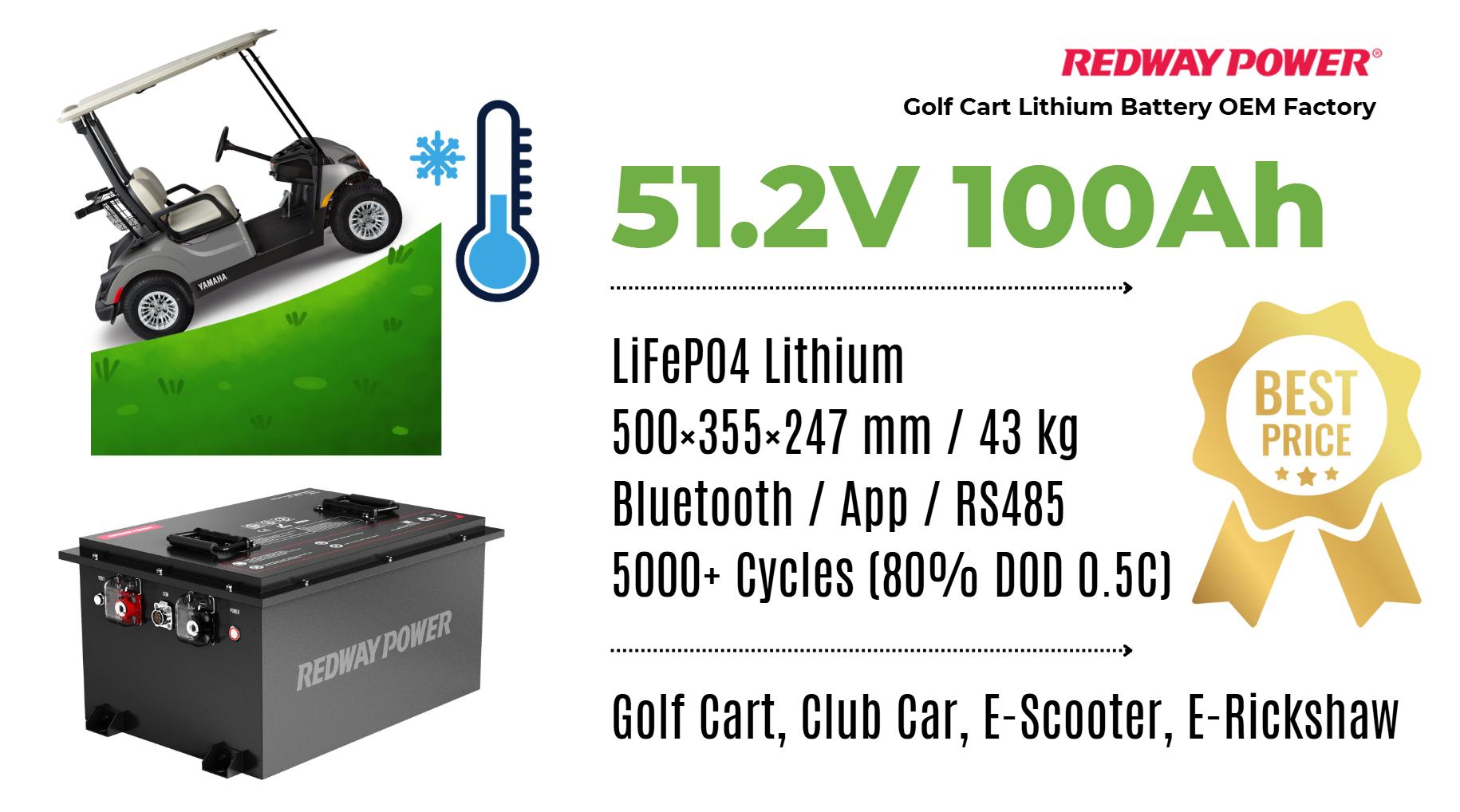How do LiFePO4 batteries perform on uneven grassland and in cold weather? LiFePO4 batteries excel in tough conditions, maintaining performance on uneven grassland and in cold weather. While charging below 0°C isn’t recommended, internal self-heating solutions can help. Proper maintenance and balancing are key to ensuring reliability.
How do LiFePO4 batteries perform on uneven grassland?
LiFePO4 batteries perform well on uneven grassland due to their robust design and vibration resistance. They are commonly used in golf carts and utility vehicles that operate on rough terrain. Their ability to handle shocks and vibrations ensures consistent power delivery and longevity, providing a reliable power source in challenging environments.
How does cold weather affect the capacity and discharge rate of LiFePO4 batteries?
Cold weather can temporarily reduce the capacity and discharge rate of LiFePO4 batteries. However, they generally outperform other lithium-ion chemistries in low-temperature conditions. While capacity can decrease, LiFePO4 batteries continue to function within acceptable parameters, especially when equipped with thermal management systems.
Can LiFePO4 batteries be charged in freezing temperatures, and what precautions are necessary?
Charging LiFePO4 batteries below 0°C (32°F) is generally not recommended as it can cause lithium plating, which damages the battery and reduces its lifespan. Precautions include using batteries with built-in self-heating systems, insulating the battery pack, or charging in a temperature-controlled environment. These measures help maintain optimal charging conditions and prevent damage.
How does vibration from uneven terrain impact the lifespan and reliability of LiFePO4 batteries?
Vibration from uneven terrain can impact the lifespan and reliability of LiFePO4 batteries by causing mechanical stress on the internal components. Secure mounting and robust battery pack construction help mitigate these effects, ensuring long-term performance and reliability.
What adaptations or features enhance the performance of LiFePO4 batteries in cold climates?
Adaptations to enhance performance in cold climates include:
- Self-Heating Systems: Internal heaters warm the battery before and during charging.
- Insulation: Insulating materials maintain the battery’s operating temperature.
- Low-Temperature Cells: Specialized cell materials that perform better in cold conditions.
- Advanced BMS: Battery Management Systems monitor and regulate temperature during operation.
What is battery balancing, and why is it critical for LiFePO4 packs used in challenging conditions?
Battery balancing is the process of equalizing the voltage and state of charge across all cells in a battery pack. It’s critical for LiFePO4 packs used in challenging conditions because it ensures that all cells operate within their optimal range, preventing overcharge or over-discharge, which can lead to reduced capacity and lifespan.
How do you manage and mitigate uneven discharge rates in series-connected LiFePO4 battery packs?
Uneven discharge rates in series-connected LiFePO4 battery packs can be managed through:
- Regular Balancing: Using active or passive balancing systems to equalize cell voltages.
- Matched Cells: Ensuring all cells in the pack have similar capacity and internal resistance.
- Proper Wiring: Using equal-length wiring to minimize resistance differences.
- Monitoring: Regularly monitoring individual cell voltages to detect imbalances early.
What thermal management strategies are effective for LiFePO4 batteries in extreme environments?
Effective thermal management strategies include:
- Heating Elements: To warm the battery in cold conditions.
- Cooling Fans or Heat Sinks: To dissipate heat in high-temperature environments.
- Insulation: To maintain optimal operating temperatures.
- Liquid Cooling: For high-performance applications requiring precise temperature control.
How do LiFePO4 batteries compare to lead-acid batteries in terms of performance on uneven terrain and in cold weather?
LiFePO4 batteries outperform lead-acid batteries in several key areas:
- Weight: LiFePO4 batteries are significantly lighter, improving vehicle performance on uneven terrain.
- Cycle Life: They offer a much longer cycle life, reducing the need for frequent replacements.
- Temperature Performance: LiFePO4 batteries maintain better performance in cold weather compared to lead-acid.
- Maintenance: LiFePO4 batteries require no maintenance, while lead-acid batteries need regular upkeep.
What are the common signs of aging and performance degradation in LiFePO4 batteries used in harsh conditions?
Common signs include:
- Reduced Capacity: The battery stores less energy over time.
- Longer Charging Times: It takes longer to fully charge the battery.
- Increased Internal Resistance: Leading to lower efficiency and greater heat generation.
- Voltage Sag: Noticeable voltage drop under load.
- Decreased Power Output: Reduced performance and shorter runtimes.
How does long-term storage in hot conditions affect LiFePO4 batteries?
Long-term storage in hot conditions can accelerate the self-discharge rate and degradation of LiFePO4 batteries. It’s recommended to store batteries in a cool, dry place with a state of charge around 50% to minimize these effects.
What are the key factors to consider when selecting LiFePO4 batteries for applications involving uneven grassland or cold weather?
Key factors include:
- Vibration Resistance: Ensure the battery pack is robust and well-mounted.
- Low-Temperature Performance: Look for batteries with self-heating or specialized cells.
- Battery Management System (BMS): A BMS that can monitor and regulate temperature and cell balance is crucial.
- Capacity: Select a battery with sufficient capacity to meet the demands of the application.
- Warranty: Choose a manufacturer that offers a comprehensive warranty covering performance in challenging conditions.
Expert Views
Quality customer service is vital for ensuring optimal performance of LiFePO4 batteries under challenging conditions. Manufacturers should provide guidance on installation, maintenance, and troubleshooting to maximize battery efficiency.
Conclusion
LiFePO4 batteries offer robust performance on uneven grassland and in cold weather, making them suitable for various applications. While they have limitations, particularly in extreme cold, these can be effectively mitigated through proper battery management, thermal solutions, and careful selection of battery features. By understanding these factors, users can optimize the performance and lifespan of their LiFePO4 batteries, ensuring reliable operation in diverse environments.
FAQ
- Can LiFePO4 batteries be used in golf carts on rough terrain?Yes, LiFePO4 batteries are well-suited for golf carts due to their vibration resistance and consistent power delivery.
- What is the ideal storage temperature for LiFePO4 batteries?The ideal storage temperature is between 5°C and 25°C (41°F and 77°F).








